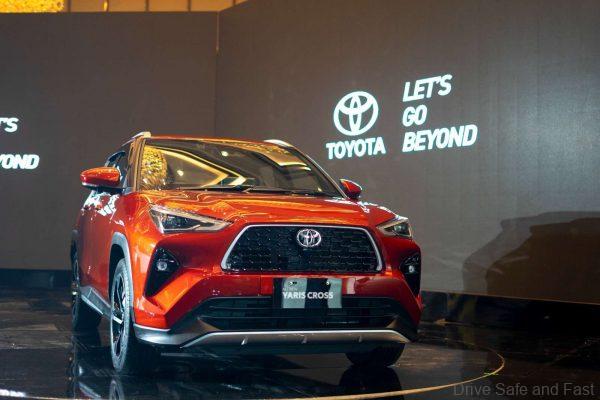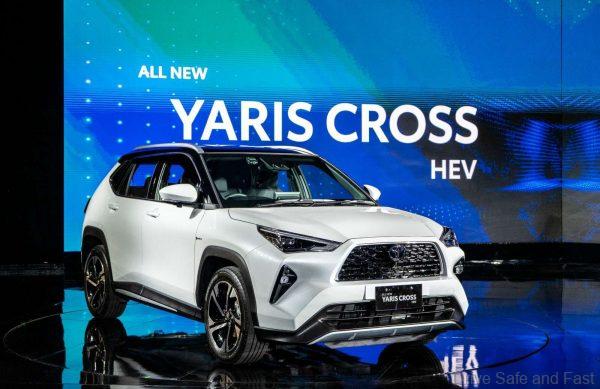A new Toyota Yaris Cross has been shown in Indonesia. It is built on the Daihatsu New Global Architecture.
We mentioned in our review of the new Toyota Vios that the rear headroom limitations may be addressed by a future crossover variant in this segment. It looks like that future crossover has arrived and it’s called the Yaris Cross. This is not the Japan/Europe market Yaris Cross, nor is this the Taiwan market Yaris Cross with nothing but body cladding on the familiar ASEAN 5-door hatch model. This is a new Yaris Cross built on the DNGA platform that is meant to squeeze in between the Perodua Ativa and the Toyota Corolla Cross in terms of price, size and positioning.

In terms of size, the all-new Yaris Cross is 4,310mm long, 1,700mm width, 1,615 mm in height and has a 2,620 mm wheelbase. Ground clearance is 260mm with an approach angle of 19º and a departure angle of 28º. The Yaris Cross has a turning radius of just 5.2m. Here are some comparative measurements for context. Toyota claims the Yaris Cross should be able to fit a family of 5 just fine and has boot space that matches cars a class larger than it.
| Toyota Yaris Cross | Perodua Ativa | Toyota Corolla Cross | Honda HR-V | |
| Length | 4310 | 4065 | 4460 | 4295 |
| Width | 1700 | 1710 | 1825 | 1770 |
| Height | 1615 | 1635 | 1620 | 1605 |
| Wheelbase | 2620 | 2525 | 2640 | 2610 |
Inside, the Yaris Cross is quite an impressive vehicle for its class in terms of equipment. Depending on specification, you’ll be treated to a panoramic glass roof with a powered sunshade, a 7″ digital instrument cluster, semi-leather upholstery with blue contrast stitching, a powered driver seat and more.

The equipment list also includes a powered tailgate with a kick sensor, an electric parking brake, auto brake hold, panoramic view monitor and the full suite of Toyota Safety Sense ADAS features including rear cross traffic alert and blind spot monitoring.

Two engine options are available – the familiar 78kW 1.5L naturally-aspirated 4-cylinder with a manual or D-CVT and a 82kW hybrid that combines the 1.5L petrol engine with an electric motor and a lithium ion battery.

This powertrain is capable of EV Mode for short distances. Toyota says the lithium-ion battery here is more resistance to the extreme working temperatures of Indonesia. Is it packaged under the rear passenger seat to keep cargo space maximised and to keep the car’s centre of gravity low.

It’ll be interesting to see if UMW Toyota Motor locally-assembles this new Yaris Cross at the Bukit Raja plant or if they decide to import it from Indonesia. It will also be interesting to see if the Yaris hatchback that was based on the previous Vios will be discontinued altogether without a direct successor. In Thailand, it soldiers on with a mild facelift.
